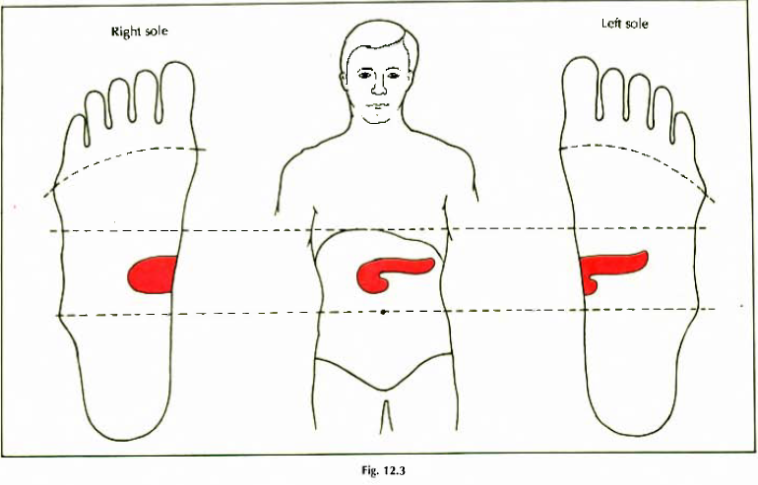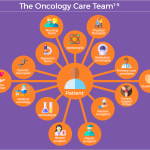
The Digital Revolution in Healthcare Research Access
In today’s rapidly evolving digital arena, the way we access scientific research and healthcare information is experiencing a dramatic transformation. With the surge of modern technology and online platforms, the traditional processes that once dominated our era are now being replaced by innovative, faster, and more secure methods. This shift is not just about convenience—it’s about ensuring that the crucial medical information is delivered to professionals and the public in a timely, accessible format.
For many in the healthcare community, the reliance on outdated browsers and legacy systems poses more than just a nuisance. It creates stumbling blocks that illustrate the tricky parts involved in accessing modern research databases. Alongside these technical obstacles, the evolving healthcare landscape brings multiple challenges that require us to think critically about technology and its role in advancing our understanding of medical conditions, treatment modalities, and scientific breakthroughs.
Modern Browsers and the Future of Health Information
The message from platforms like ScienceDirect regarding outdated browsers is more than a technical note—it is a call to embrace change. The clear challenge presented by these messages is a reminder that sticking with obsolete technology can hinder both academic and clinical advancements. It illustrates the tangled issues associated with insufficient digital infrastructure in an era where every click might lead to groundbreaking insights.
Updating Technology for Better Patient Outcomes
The drive to update our digital tools is linked directly to the overarching mission of enhancing patient care. When healthcare professionals have immediate access to the latest research, the decision-making process becomes both more informed and more effective. Here are some key reasons why keeping up with modern technology is super important:
- Rapid Access to Information: Modern browsers support advanced features such as accelerated page loads, dynamic content rendering, and improved security. This means that the detailed results of studies and clinical trials are no longer hidden behind nerve-racking delays.
- Enhanced Security Measures: Online platforms manage sensitive healthcare data. Up-to-date browsers offer robust security protocols that protect against hacking attempts and maintain the privacy of both patients and research subjects.
- Better Compatibility: Many new research tools are built on the assumptions of modern technology standards. Using current browsers ensures compatibility, avoiding the complicated pieces and glitches that occur with outdated software.
Embracing new technology is about more than just faster internet speeds. It’s a commitment to maintaining a secure, reliable, and efficient channel for the dissemination of critical healthcare data.
How Outdated Technology Impacts Medical Research
The message to “update your browser” may seem like a simple technical request, but its implications extend into the heart of scientific research. Every delay in accessing data, every barrier to a secure connection, leads to potential setbacks in understanding and solving some of medicine’s most intimidating problems.
Technology as a Gatekeeper in Medical Discoveries
Older systems, much like an outdated browser, often become a stumbling block. They tend to be plagued with issues that slow down the dissemination of highly critical research, adding layers of complexity to the process of getting new treatments and discoveries into practice. Here are some of the common problematic scenarios:
- Slow Response Times: When browsers lag or crash, the friction in accessing research can delay life-saving information.
- Security Vulnerabilities: Outdated systems are more vulnerable to cyber-attacks, posing risks to sensitive health data.
- Incompatibility: Legacy technology can struggle with the fine points of modern web interfaces which are built with the latest coding languages.
As we steer through the technological advancements, it is critical to understand that every second of delay can potentially mean a setback for medical discoveries. The ability to access research seamlessly can pave the way for breakthroughs in treatments and overall patient care.
Embracing Continuous Learning in a Digital Era
The shift toward modern technology in healthcare is not just about adopting new software; it’s about cultivating a mindset of continuous learning and adaptation. Healthcare professionals and researchers must get into new digital practices to remain at the forefront of medical innovation. In many ways, this change represents a broader commitment to staying updated with the latest methodologies and treatments available.
Steps to Stay Updated and Secure
Modernizing digital infrastructure requires both investment and proactive strategies. Here are steps to help healthcare professionals and research platforms embrace the benefits of modern technology:
- Regular Software Updates: Implement routine checks to ensure browsers and associated software are the most recent versions available.
- Training Sessions and Workshops: Encourage and organize regular training focusing on technology use in healthcare, ensuring that every individual understands how to access and navigate new systems.
- Adoption of Best Practices in Cybersecurity: Engage cybersecurity experts to assess and fortify systems, protecting sensitive patient and research data effectively.
- Feedback Loops: Create structured feedback systems for both staff and users to report issues related to accessing digital platforms, ensuring that obstacles are quickly addressed.
These approaches are super important, as they hold the promise of a smoother, more efficient transition to contemporary digital technology in healthcare. By taking the time to educate and update systems, we can significantly reduce the nerve-racking tensions of working with outdated platforms.
The Intersection of Technology and Medical Innovation
At the intersection of modern technology and healthcare, the reliance on digital platforms is clear. The process of modernizing offers not only an advancement in speed and security but also unlocks the door to benefits that extend across research, diagnosis, and treatment. The digital transition paves the way for innovations that could ultimately redefine patient care.
Bridging the Gap Between Research and Clinical Practice
The reality is that many clinical decisions are made based on the latest research data available through online resources. When browsers or systems are outdated, there is a risk of not accessing the full spectrum of up-to-date studies, treatment recommendations, and clinical trials. This can inadvertently lead to less informed decision-making in clinical settings.
For example, consider the following aspects where modern technology plays a critical role:
- Real-Time Data Sharing: Immediate access to emerging research enables professionals to adapt treatment plans quickly in response to new evidence.
- Telemedicine and Virtual Consultations: Secure and efficient online connections are the backbone of telemedicine, a field revolutionizing the way patients interact with healthcare providers.
- Personalized Medicine: More precise data delivery facilitates better understanding of patient histories and genetic information, allowing for treatments tailored to individual needs.
In essence, bridging the gap between scientific research and everyday clinical practice is best achieved when the digital infrastructure supporting this transfer is robust and up to date. This makes it easier for practitioners to find their way through complex information and make decisions that truly benefit their patients.
Integrated Systems: The Future of Health Information Platforms
Looking ahead, the evolution of integrated systems within healthcare is set to redefine how we engage with and utilize scientific research. Integrated systems link various sources of health information—from electronic health records (EHRs) to research databases—making it possible to bring together data in ways that were long considered nerve-wracking or even impossible.
Key Benefits of Integrated Health Systems
Integrated systems blend information from multiple sources and simplify the complicated pieces of accessing and using data. Here are some of the essential benefits provided by these systems:
| Aspect | Benefit | Description |
|---|---|---|
| Streamlined Access | Faster Decision Making | Integrating various data sources accelerates the rate at which professionals get access to new research and critical patient data. |
| Improved Data Security | Enhanced Safety | Modern integrated systems come equipped with advanced cybersecurity measures that protect sensitive information, reducing risk from outdated protocols. |
| Unified Data Analytics | Better Insights | These systems allow for the collection and analysis of data across different platforms, leading to more informed clinical and research insights. |
This integrated approach not only improves operational efficiency but also ensures that patients receive the best possible care. When data is unified and seamlessly accessible, healthcare professionals can more easily piece together subtle details that make the difference between conventional and pioneering approaches to treatment.
Overcoming the Challenges of Digital Transformation
The journey through digital transformation in healthcare is full of challenges that are sometimes loaded with issues. Like any significant change, it comes with its own set of obstacles, including technical glitches, resistance to change, and the inherent risks of cyber threats. However, examining and addressing these problematic aspects is necessary for progress.
Real-World Examples of Overcoming Digital Barriers
Several institutions have already managed their way through these obstacles by adopting innovative strategies. Consider these examples:
- Implementing Strict Update Protocols: Many hospitals have instituted mandatory software updates and security screenings, ensuring that outdated technology does not interfere with clinical operations.
- Comprehensive Training Programs: By offering dedicated technology training sessions, staff members can quickly get around the confusing bits associated with new systems, making the transition less intimidating.
- Partnerships with Tech Innovators: Collaborations between healthcare institutions and tech companies have paved the way for customized solutions that address the specific needs of the medical community, ensuring smoother integration of innovative tools.
These real-world examples illustrate that with the right strategies, the intimidating twists and turns of digital transformation can be transformed into opportunities that drive dynamic growth and enhanced patient care.
Evaluating the Impact of Outdated Interfaces on Scientific Communication
The persistent issues associated with outdated digital interfaces influence more than just user experience. They can have a direct impact on how scientific communication is conducted, influencing everything from data accessibility to the quality and speed of peer-to-peer discussions in the research community.
Issues with Outdated Interfaces
Outdated interfaces often result in the following challenges:
- Delayed Information Flow: Important scientific breakthroughs and treatment updates are slowed down when critical information is trapped behind legacy systems.
- Limited Functionality: Older platforms may lack advanced features necessary for engaging with modern research tools, meaning researchers might miss out on functionalities that support deeper analysis of treatment outcomes and clinical data.
- User Frustration: The constant need to troubleshoot and adapt to non-intuitive interfaces can lead to frustrations, making it hard for users to figure a path forward through the technical maze.
As a result, the overall efficiency of scientific communication is undermined, making it essential for research institutions to invest in modern digital frameworks that streamline these processes.
Towards a Unified Path: Collaborative Solutions for Today and Tomorrow
The future of healthcare depends on creating collaborative and unified digital pathways. By working together across industries—whether in technology, medicine, or education—we can form partnerships that help clear the nerve-racking obstructions of outdated research interfaces.
Strategies for Collaborative Improvement
Here are some strategies that can help forge a path toward a more efficient digital future in healthcare:
- Joint Ventures with Tech Companies: Healthcare institutions can team up with technology firms to create customized tools and platforms, ensuring that the subtle parts of data sharing and analysis are addressed efficiently.
- Interdisciplinary Research Committees: Bringing together experts from different fields can spark innovations that overcome the little twists of outdated systems, ensuring that every stakeholder contributes to the solution.
- Public-Private Partnerships: These alliances can facilitate investment in the required infrastructure, helping bridge the gap between research insights and clinical realities.
- Standardization of Platforms: Creating universal digital standards for research platforms can make it easier for users to adapt quickly and safely when transitioning between different systems.
Collectively, addressing these issues through cooperative ventures and shared knowledge can help demystify the challenges brought on by outdated technology. This unified approach holds the promise of a future where access to breakthrough medical research is not hindered by technical delays or security concerns.
Digital Inclusion: Making Modern Healthcare Accessible to All
A central tenant of the digital transformation in healthcare is ensuring that these advancements are not just confined to select institutions or professionals. Digital inclusion plays a key role in guaranteeing that improved technology reaches all areas of the healthcare system, from large academic centers to remote clinics.
Promoting Widespread Access through Technology
One of the most effective ways to ensure digital inclusion is to invest in the necessary infrastructure that supports widespread access to modern digital resources. Consider the following measures:
- Community Training Programs: Initiatives that educate local healthcare workers on modern technology can transform nerve-racking, outdated practices into seamless, efficient processes.
- Affordable Technology Solutions: By subsidizing modern software and hardware, even small clinics can benefit from secure and rapid access to critical research.
- Telehealth Expansion: Enhancing telemedicine services by providing secure, modern platforms brings healthcare expertise to populations that might otherwise be left out.
The transformation of outdated systems into modern, efficient solutions can serve as a model for a more inclusive healthcare system. By making these updates, communities across the board can benefit from enhanced patient outcomes, more precise diagnostics, and a collaborative approach to chronic disease management.
Conclusion: Embracing the New Digital Landscape in Healthcare
In conclusion, the need for modernizing our digital interfaces—whether indicated by browser update messages or the tangible benefits of integrated systems—is clear. The benefits of transitioning from outdated platforms to modern, secure, and efficient digital tools are multi-fold. This transformation not only paves the way for faster, more secure access to research data but also plays a pivotal role in improving the overall quality of healthcare delivery.
As we figure a path through these digital challenges, it is essential to remember that every update and every new tool represents a step closer to overcoming the confusing bits associated with legacy systems. With modern digital platforms, healthcare professionals have the power to ensure that critical research findings are rapidly and securely delivered, enhancing patient care and fostering an environment where innovation thrives.
By working through the tangled issues of outdated technology and embracing the nerve-racking but necessary process of change, the medical community and research institutions can set a new standard in scientific communication and patient care. The subtle parts of digital transformation—though filled with little twists and hidden complexities—offer a promising future as long as we commit to continuous learning and collaborative innovation.
Ultimately, the transformation from outdated digital systems to modern, user-friendly technology is not just an upgrade in software—it is a revolution in the way we think about and access information in healthcare. It is the steady pulse of innovation that will continue to guide us through the countless twists and turns of modern medicine, ensuring that every professional, regardless of location or resource availability, can tap into the collective pool of knowledge for the betterment of patient care and medical progress.
It is time to take a closer look at the digital tools that underpin our scientific pursuits. Whether you are a clinician wrestling with fine points of patient data or a researcher navigating the little details of groundbreaking studies, embracing modern technologies can eliminate many of the overwhelming barriers that once stood in your way. The future of healthcare is digital, and by taking that step forward together, we can ensure that progress is both inclusive and super important for every facet of our system.
In this era of digital advancement, let us not be intimidated by the challenges of modernizing our technology. Instead, let us see them as key opportunities to innovate and improve. As we make our way through the exciting yet complicated pieces of digital transformation, we are setting the stage for a more efficient, secure, and inclusive future—one where medical breakthroughs are accessible, patient care is enhanced, and the journey toward health innovation is as swift and clear as a modern browser can make it.
Whether you are updating your browser or implementing sweeping changes to the systems that run our healthcare facilities, know that you are part of a larger movement. A movement committed to ensuring that the vast reservoir of medical knowledge remains open, accessible, and ready to inform tomorrow’s treatments. In doing so, we lay the groundwork for a future where every individual, no matter where they are, can benefit from the priceless insights generated by decades of relentless research and innovation.
As the digital era continues to evolve, our collective responsibility is to dig into the challenges and opportunities that each new technology presents. Let us embrace the change, overcome the nerve-racking obstacles, and work together to ensure that our journey through the digital landscape of healthcare is marked by progress, innovation, and above all, a steadfast commitment to improving lives through science.
In summary, the call to update your browser is a microcosm of a larger, transformative movement within healthcare—one that insists on clarity, security, and rapid access to the building blocks of medical progress. Let us take this challenge head-on, armed with new tools, collaborative strategies, and an unyielding determination to forge a path where healthcare information is as modern, accessible, and dynamic as the technology that supports it.
The future belongs to those who dare to upgrade—not merely their devices, but their entire approach to accessing and sharing vital healthcare information. This is not a moment for complacency; it is a moment for revolution—a call to action for every stakeholder in the health and research communities. Together, as we steer through these digital transformations, we can ensure that the benefits of modern technology are harnessed to create a healthcare environment that is secure, inclusive, and ready to tackle the challenges of tomorrow.
In embracing this digital transformation, we not only honor the legacy of scientific inquiry but also ensure its thriving future. Let every updated click, every reformed system, and every secure connection be an affirmation of our commitment to a better, more connected healthcare future for all.
Originally Post From https://www.sciencedirect.com/science/article/pii/S2949752325000731
Read more about this topic at
why i am getting this error Your browser is out of date! …
It’s starting: Warning: You are using an outdated browser …


